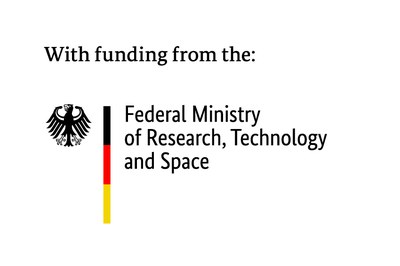
Contact
Dr. Maximilian Schalenbach
PostDoc
Building 01.3 / Room 3007
+49 2461/61-85549
E-Mail
Dr. Hermann Tempel
Acting Department Head Functional Materials and Components
Building 01.3z / Room 4006
+49 2461/61-96570
E-MailPRELUDE
PRocess and sea water ELectrolysis for an environmentally friendly green hydrogen economy in Germany
As part of the project PRELUDE (PRozess- und Meerwasser-ELektrolyse für eine Umweltverträgliche grüne Wasserstoffwirtschaft in DEutschland), robust electrochemical reactors are to be developed that can obtain hydrogen from industrial or salt water sources using green electricity. When producing hydrogen, competition with drinking water, which is used for electrolysis in the current state of the art, should be avoided. At the same time, material cycles are closed using industrial wastewater for hydrogen generation. The combination of basic scientific and technical know-how of the project network from IET-1, RWTH Aachen, Lenzig, and Covestro is intended to build a bridge between science and industry in order to support the expansion into an energy-efficient circular economy.
When producing hydrogen from salt or process water, the counterreaction can be realized through the evolution of oxygen (see project i-NEW2), whereby water is split. On the other hand, the counterreaction can occur through the conversion of chloride (a major component in most salt-containing contaminants) to chlorine gas. Chlorine gas is an important intermediate product in the plastics industry, which plays an important role in polymerization reactions, among other things. In the state of the art, highly concentrated salt solutions are currently used to produce chlorine gas. In order to produce chlorine from process wastewater with low molar salt solutions, the corresponding technical and scientific challenges are linked and solved in a collaborative effort. Among other things, the distribution of substances in the electrochemical cells and the longevity of the anode play a crucial role at low concentrations.
As part of a dissertation in this project, the interaction between ion migration and diffusion is fundamentally investigated in order to be able to design reactors in a targeted manner using this knowledge. A mass transport model for electrolytes is developed in which the electrodynamic ion-ion interactions are taken into account, which are responsible for the electroneutrality in the electrolyte. The model is evaluated using optical measurements of concentration gradients in a copper sulfate solution. In addition, the influence of convection in flowing electrolytes on the ion distribution and their transport will be investigated. With these findings, a design of electrolysis cells for salt and process water should be developed in a targeted manner, which is optimized with regard to the physicochemical mass transport conditions. The focus here is, among other things, on avoiding oxygen contamination in the chlorine gas produced.
When producing chlorine gas with low molar solutions, it is still important to reduce the use of precious metals on the anode in order to be able to make changes to the state of the art with regard to the electrolysis of low molar solutions in an economically and ecologically sensible manner. Another dissertation in the project network deals with anode development, whereby the aim is to further develop the so-called dimensionally stable anodes for chlorine gas evolution. These anodes are made of titanium-ruthenium composites, the production and microstructure of which have a decisive influence on longevity, performance, and precious metal content. First, a detailed understanding of the basic mechanisms of the reaction and their relationship to the electrode structure should be established. With these findings, electrodes in industrial cells should be specifically improved and adapted to the new challenges with low-molar electrolytes. Based on the improved understanding of the technical and physicochemical relationships in the electrolysis of low-molar salt solutions, the project group is developing a demonstrator that shows the potential of symbiotic water desalination and hydrogen synthesis.
associated partners
RWTH Aachen AVT – Aachener Verfahrenstechnik
Covestro Deutschland AG
Lenzig AG
FUMATECH GmbH

